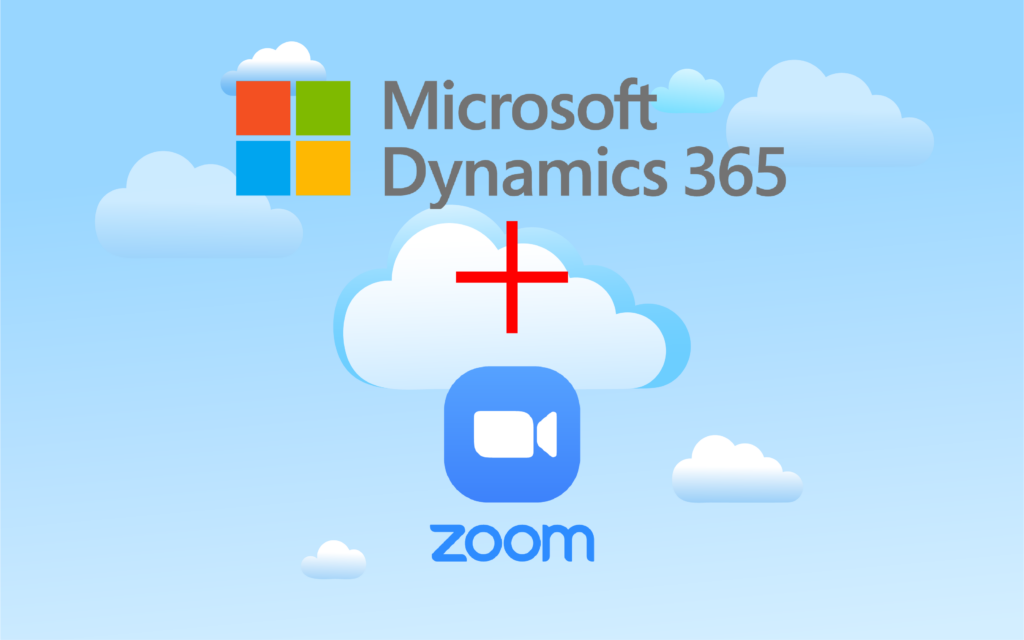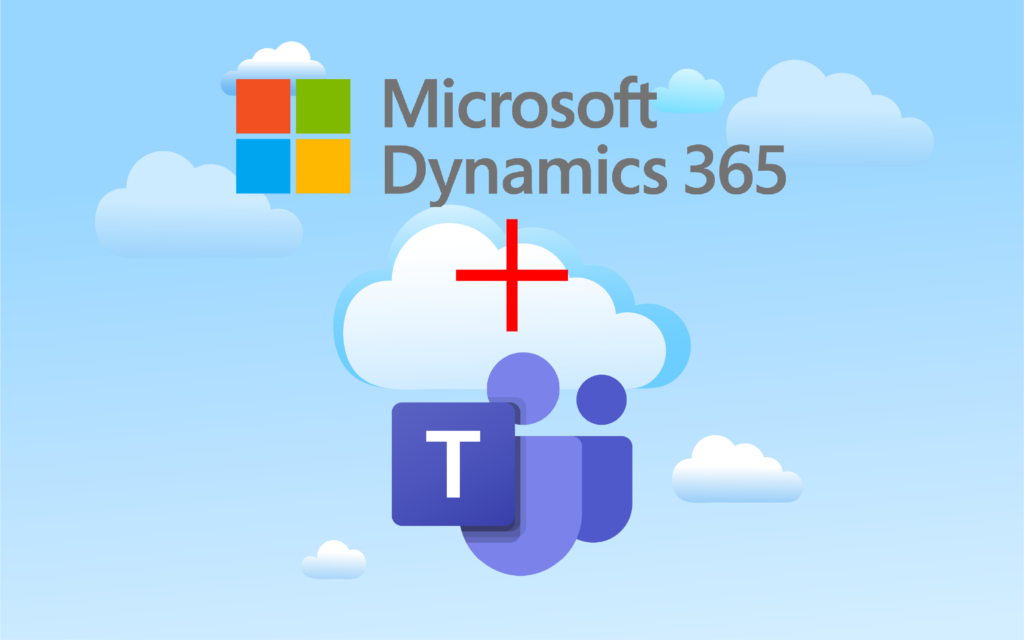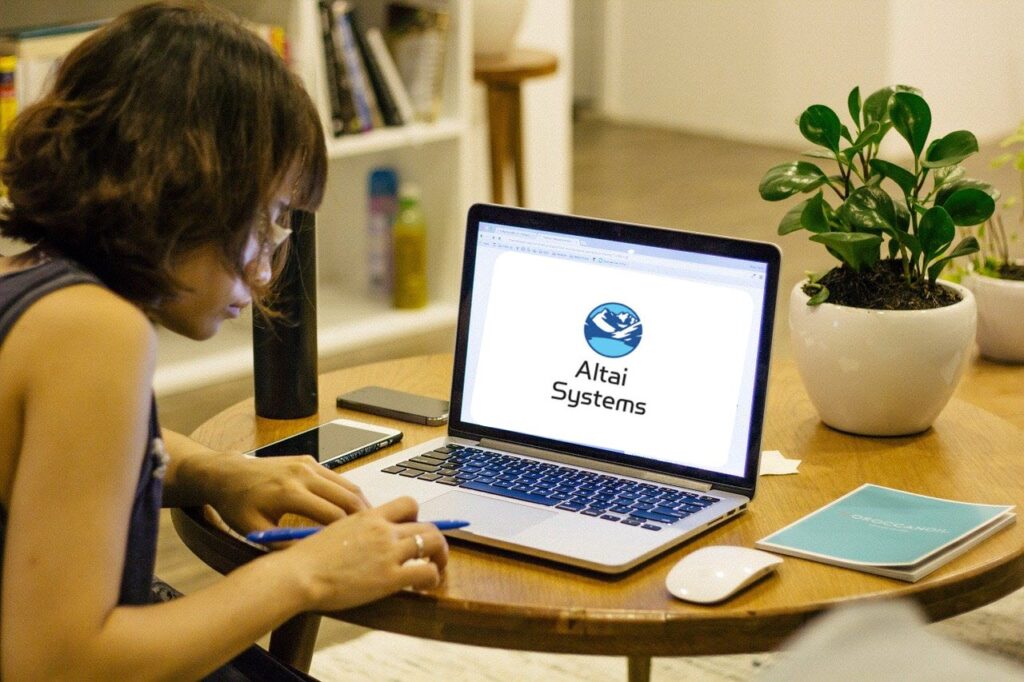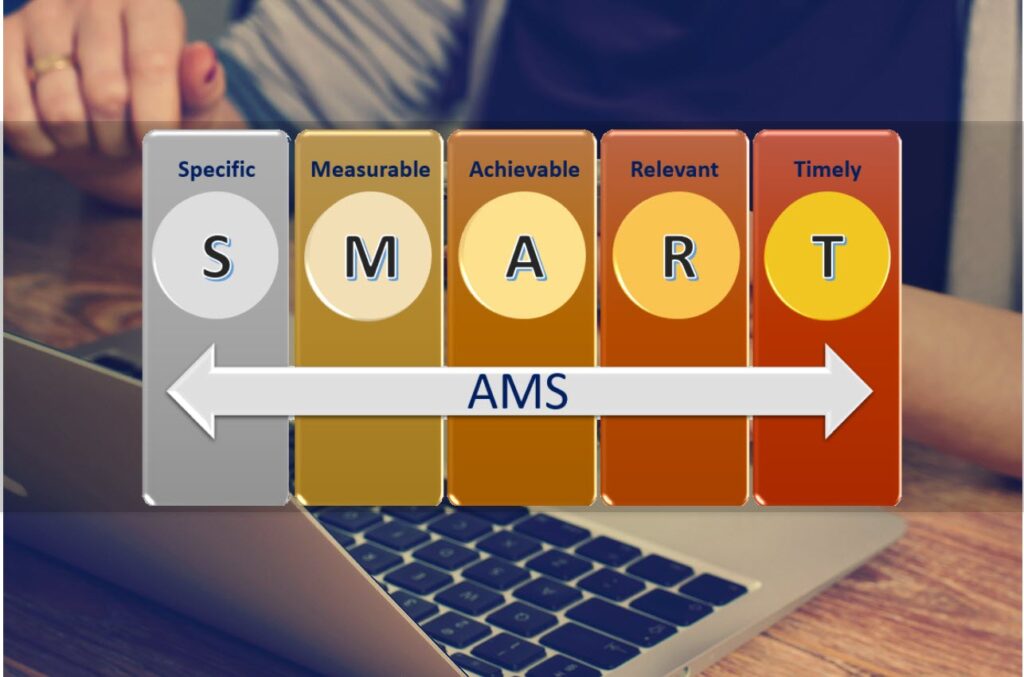The Altai Advanced Certification and Credentialing Solution
Altai’s Advanced Certification solution (ACCS) was first released in 2010 utilizing the Microsoft CRM platform. We’ve been enhancing and expanding its capabilities for the last 10 years to bring you the best solution possible. The ability to extend and enhance the solution is one of the strengths of the Altai Business Platform. It is designed to be personalized to your organization’s needs while maintaining an unhindered upgrade path. By configuring CRM instead of writing custom code, Altai meets our client’s short-term requirements while allowing our clients to adapt their configurations as new requirements arise. Our certification solution is highly flexible and is designed to support basic certification requirements as well as automate complicated certification programs, continuing education programs, business rules, and recertification processes – all managed by your staff from a single system. this includes a powerful rules engine that can manage the most complex certification programs that your staff can adjust as needed without coding. They will also be able to monitor certification status, track and approve applications, and easily update application forms and online processes from the Altai business platform back office. Our solution covers everything from the application processing to exam management, to certification and re-certification. Importantly, our Certification solution is part of the AMS product and is fully integrated across all modules (i.e. Certification, Membership, Events, Education, Finance, etc.). This provides a seamless experience to your users and access to all related information. As with other areas of our solution, certifications are tracked from Web to GL. While Altai has been working with certification organizations since 2010, in 2012, we engaged with the Project Management Institute (PMI) to replace their existing systems. This included certification, membership, education, and multiple integrations that included: financial, credit card processing, Prometric’s exam management, etc.. Working as a team, we were able to consolidate five different systems into one, move their million-plus members into Dynamics CRM; replace and automate a number of their certifications, integrate with Great Plains Dynamics, Prometric, and their website. During this time, Altai significantly expanded their solution to meet the needs of enterprise organizations; and incorporate a tool we call the “Business Rules Engine” into our solution that provides the ability to apply complex business rules without using code. Since then, we’ve deployed our solution to a number of organizations including: The Human Resources Certification Institute (HRCI), an international organization that certifies HR professionals around the world. As part of the project, we replaced their certification, recertification, membership, and education management solutions with our integrated Certification and Membership AMS solution. They have been live on their systems for over 2 years now and are continuing to expand its functionality and deploy new certifications and products with little to no effort on our part. This was one of the project goals, to enable HRCI to take ownership of the system and extend it based on their business needs. Medical Group Management Association (MGMA), a national organization that provides key elements in perpetuating success throughout the healthcare industry thru its membership and certifications. MGMA also replaced several existing applications with our integrated Certification and Membership AMS solution. Similar to HRCI, MGMA has to continue to expand its functionality and deploy new functionality and products with little to no effort on our part to better support their business units’ needs. In the following sections, we will delve deeper into the Altai Certification solution, the respective functional areas, and how it will work for you General System Overview Certification and Recertification Setup and Management Application Processing Exam Management and Processing General System Overview The table below provides an overview of the modules/areas that comprise and support the Altai Certification solution and some of the benefits that our clients receive. Certification and Recertification Setup and Management Your staff will be able to set up the requirements for each of your certifications easily within the system as well as the rules and requirements around recertification. The requirements that you setup will control how the certification/recertification processes are managed and applications are processed. This includes items such as: Available Exams for Certification Requirements associated with an exam such as “Eligibility Period”, “Wait Period”, “Exam Extension Period”, “Exam Failed Retake Wait Period”. You can add additional required as needed. General Certification requirements such as “Education Level Required” and “Work Experience Required”. Additional requirements such as “School”, “Work” and you can define your own requirement types. Auditing rules – i.e. “Audit Threshold”, “Audit Counter”, “Recert Audit Threshold” and “Audit Recert Counter. Recertification requirements – i.e. “Allow Recert by Exam”, “CEU’s Required”, “Work Experience Required”. Once again, all of these rules are configurable within each Certification and additional ones can be added as part of the configuration. The screenshot below provides a sample of how certification can be setup. The implementation of these rules and the Altai web portal will enable your certificants to: Maintain their profile information, upload their picture, and capture any of the data needed for you to better support and manage your certificants. Complete applications for certification and recertification. Submit required documentation for certification and recertification (i.e. Student transcripts, Letters of Reference, Resumes, Vitas, or CVs). Purchase and schedule exams for certification and recertification. Monitor their exam status and see the results. Monitor their certification and recertification status. Track and submit their Continuing Education (CEU’s, PDU’s, CE’s, etc.) as part of their recertification process Based on your organization’s business rules and requirements, you can use the Web Portal to collect and manage the Certificant data you need. Application Processing Using Altai’s certification/credentialing solution, applications can be processed manually via a submitted paper application or on-line using our web portal. Once submitted, the application will follow your business processes. The Dashboard below provides an example of how you can see and manage your applications. The applications are queued based on “Certification being applied for” and “Application Status”. Your staff will quickly see what’s in their queue to work on. The solution supports the configuration of different “Application Statuses” so that you can map your certification process to the system and organize queues based on your business processes. Exam Processing Exam processing is typically one of the key components of certification. Whether exams are required for certification and are used for recertification, the Altai Certification solutions support both. We provide support for tracking all relevant Exam data, the ability to collect additional data as needed, and
Altai Events – Staying Connected Virtually Through Zoom

Microsoft Dynamic Integration with Zoom Executing Zoom Events Within Your AMS Zoom reported their usage skyrocketed from 10 million daily meeting participants to 300 million daily meeting participants early in 2020 and more than likely you were one of them. With the shift to remote work, out of the office, apps such as Zoom, and Microsoft’s Teams, have seen major upticks. At Altai we’ve been big fans of both, relying on them to help our staff communicate since well before the pandemic. With our client’s needs shifting from in-person to remote, we’ve taken the steps to make work even easier for our clients. We’ve always maintained a robust backend event management system that provides the tools to set up, manage, and report on events from a small team or board meetings to massive annual events. Since the pandemic, we’ve worked with our customers to make sure they’ve stayed at the forefront of managing how association events are evolving virtually. One way that we’ve done so has been to integrate Zoom directly into their AMS. Our integration keeps all meetings, webinars, and events in synch with Zoom. The integration also keeps attendance updated and creates leads for non-member attendees. From the web portal plugins that run our customer’s membership portals to the back-end event’s team reporting and workflows. Zoom automatically communicates back and forth with Altai’s AMS and Microsoft Dynamics 365. As a virtual events team, you’ll be able to create your events directly inside your event management platform and it will automatically create the event within Zoom. Conversely, if you create an event within your zoom account, the integration will pull those details back into your AMS. An Event’s Journey with Altai’s Zoom Integration Easily create the meeting or webinar in CRM which automatically creates the Zoom meeting. Publish the event to the web portal Enable membership to register for the event. Invite users to your Zoom meeting or webinar Security, content can be open or closed to nonmembers or only available to specific events. Support for simple webinars or events with sessions Additional Opportunities with Zoom Allow event registration through your member’s portal, creating an event attendee record for established contacts or can create new contacts when needed If a registrant is not a contact in your CRM, a new lead and associated contact record will be created and you’ll be automatically alerted if it’s a duplicate. If a registrant is already a contact, a lead record will be created and associated with the contact already in the system. Once your Zoom event is complete, attendance will be updated in your AMS along with engagement and time attended Attendance records are updated with minutes attended, engagement scores are created and if the webinar allowed non-member attendance, then a CRM lead record is created.
Altai Events: Using Microsoft Teams for Event Management

Microsoft Teams Integration with Dynamics 365 From Concept to Execution to Finance Have you considered that Teams can extend beyond meetings, or webinars to large scale virtual conferencing complete with sponsorships, virtual booths, multiple concurrent sessions, conference-wide or focused broadcasting, as well as multiple moderators and contributors? Microsoft Teams does more than simple chat, collaboration, video conferencing. Microsoft Teams has seen its daily active user count rise from 32 million in March to over 75 million by the end of April 2020. As an app available in the broader Microsoft 365 productivity bundle, Teams is available to all Microsoft 365 customers, it simply needs to be activated to start using it. Lately, Microsoft has been promoting big-name organizations that have been using Teams, which includes the NFL who used Teams to manage the Draft. In March, Microsoft reported that 91 of the 100 largest organizations, a staggering number, all use Teams in the workplace. That’s all to say that here at Altai we are big fans of Teams and use the app daily ourselves. One of the ways we love Teams is its functionality and ability to integrate. Our own team, spearheaded by partner, Mike Frye, has combined the powerful tools found in Teams, with Altai’s AMS built within Microsoft Dynamics 365 platform. Together, we’ve created a powerhouse virtual event management tool for associations. Since associations and its members are already collaborating daily with teams, the end result of our integration is a seamless experience for your organization’s membership. In addition, registering for events, purchasing booths, and providing sponsorships are conducted within your member portal before publishing your conference. How it Works: High-Level Functionality The Altai Event Management systems allow users to manage webinars and events using an easy to use template and cloning application. Using the Event template builder you can click on an event or template and create a webinar or full-blown annual event and have it ready for registration in less than a minute. Altai’s event management platform manages the following: Easily creating the Event in the CRM Publishing the event to the web portal Enabling membership to register for the event. Creating the Event in Teams as a secure member portal Inviting the users to both the Team and the Teams Meeting Building a presenter’s area for session discussions, content, handouts, and collaboration Transcribing and indexing the session meeting once it is finished. “Community” enables the content. Security, content can be open or closed to nonmembers or only available to specific committees. Support for simple webinars or events with sessions, booths, committees, What Event Features are implemented/integrated with Teams? Automatically create an event site with member-specific security. Ability to manage many sessions. Ability to sell and manage vendor “booths” Ability to sell and manage sponsorships. Ability to enable broadcast communications to the sessions, booths, and members. Allow a member in securely and also block/remove them. Allow speakers and moderators to collaborate privately Allow registrants to see video content at a later date. (Coming Oct, but YouTube for now) Allow for the automatic transcription of the meeting. Ability to allow registrants to discuss and collaborate on content or session. The Altai Microsoft solution has all the features required to put on an event. Teams has a fantastic ability to allow those producing an event or a session to collaborate on the best ways to achieve this educational content and deliver it to the right members at the right time. What are the advantages of using Microsoft Teams? Today Microsoft Teams is the number one collaboration platform in the world. It is free with Office 365, and it has all the functionality you need to bring your members closer to your events and programs. Teams is perfect for learning and Teams is also very extendable. You can configure a webinar or event with over 200 apps that allow your members to learn and collaborate better. Here are a few of the features: Ability to invite members without paying a per-user license fee. A community can be built around the content. Extreme reliability and scalability. Today 75 million users log onto Teams daily. Not only does Teams automatically scale, but it is also ultra-secure. The content is captured forever and is available to the membership as an additional benefit and an additional revenue stream Security, you can control each portion of the event, the presentation, and the availability of that meeting to members at a very granular level. A very easy and familiar interface. Very flexible to extend and automate. One can automate any aspect of an event from registration to one-click wallet pay to automatic surveys to task management with only a few clicks.
Platform v Product and Selecting the Last AMS You’ll Ever Need

Your First Step What to do when you’re considering cutting your losses and selecting a new AMS? The first step should be to analyze the strengths, weaknesses, opportunities, and threats of your current solution based on the requirements you have today. Has your AMS been able to bridge the gap between previous and current requirements? If not, there’s a decision to be made in terms of your next solution. There are essentially three approaches to association management solutions: 1) Product, 2) Build v Buy, 3) Platform-based solutions. 1) and 2) are very similar; they’re both a set of tools from one company that comes in a single package, let’s call them a suite, which means each application is designed by the same company. The components in the suite are designed to work together but can never provide the interconnectivity to software applications outside their closed environments. Suites start out with good intentions: lower risk, cost, and the time associated with enabling major functions of an association’s technology. And they’ve developed and commercialized to be everything to everyone; a veritable one-stop shop for multiple, complex, and important components. Inevitably, associations realize that the suites they’ve chosen will never evolve to reach a level of adaptivity that can be extended and scaled. Associations are now at a crossroads: they must start the RFP process all over again, or worse, live with an application suite that is increasingly inflexible. How to Break Out of the Vicious RFP Circle and Love Your AMS On the surface, platform-based solutions may appear similar to suites. They both offer a wide range of features out of the box to provide greater access to your biggest asset: your data. But if you drill down just a bit, you’ll see the difference lies in the inherent openness of the platform. The open nature of a platform will give you the ability to add functionality and capabilities you don’t even know you need yet. Platforms broaden your association’s ecosystem by evolving as your business changes. There are so many good reasons to select a platform-based solution, but one of the primary purposes is to lay the foundation of a technology framework that can be easily extended to add new members, new products, new events – the sky’s the limit – without risk or disruption to the business. Think about the e-commerce framework Amazon built to sell books. Over time and without any disruption to their business, they’ve been able to scale and expand their operations to the degree that you can now find everything from soup to nuts on their site. How many times has Amazon been “down”? The Altai Systems’ AMS is built within the Dynamics 365 platform (the Altai Business Platform), so each module, from Membership to Events, to Finance to eCommerce & Credentialing, and everything in between, taps into all of the cutting technology Microsoft spends billions of dollars developing every year. Would you like to know whether someone with 100+ followers tweets about your association? That’s easy! Create a workflow! As your association grows and requirements arise that have been previously unconsidered, the suite that worked for you once is very likely not working now. And what is it costing you to upgrade and update, to support and maintain, to customize? How long are you waiting for an enhancement because you have a requirement the solution can’t meet? If the goal of your association is stability within a diverse and ever-changing technology and competitive landscape, then either an AMS suite or platform will help you achieve that goal. But if the AMS you’re running today isn’t helping you achieve your strategic vision you need the Altai Business Platform. You’ll restore confidence in your data and free up your staff to create new, exciting revenue streams. Imagine if the very solution critical to running your association were within reach! Imagine that your association platform solution was so comprehensive, easy to run, and future-proofed that you’d never have to change again. The Altai Business Platform is the last AMS your association will ever need.
We know ERP and Accounting
[vc_row][vc_column][ultimate_spacer height=”10″][ultimate_heading main_heading=”Altai Financial System – From the Beginning…” alignment=”left”][/ultimate_heading][ultimate_spacer height=”20″][/vc_column][/vc_row][vc_row][vc_column width=”2/3″][ultimate_spacer height=”10″][vc_column_text]Before starting Altai Systems, founding partners Mike Frye and Jon Martin founded Signature Systems, one of Microsoft Great Plains’ largest partners of the late ’80s. Their success was so well-established as an ERP / Accounting Solutions Partner; Signature Systems was acquired by Ernst and Young. It was this transaction that brought Mike Frye and Jon Martin together as business partners and, with their combined expertise, led to Altai Systems. Using their accounting solutions backgrounds, they developed Altai’s financial solution to provide the functionality and combined ease of use that accountants and accounting staff need to do their job. As technology has improved, so has our understanding of accounting solutions and how we can make the lives of accountants easier. Outlined below is an overview of our solution and how we surpass the functional needs of accountants to make their lives simpler. We streamline processes and implement best practices as a part of automation (i.e., auto reconcile, auto batch creation, auto dues bill renewal, wallet payments). Below we’ll cover everything from administrative and setup; to tracking revenue starting with the web portal and going all the way to your financial system. [/vc_column_text][ultimate_spacer height=”20″][/vc_column][vc_column width=”1/3″][ultimate_spacer height=”60″][dt_vc_list bullet_position=”middle” dividers=”false”] What We’ll Cover: Accounting and Financial Management Administration Multi-Company Easy to Use Dashboards and Reporting Batch Management & Integrations Advanced Accounting Tools [/dt_vc_list][/vc_column][/vc_row][vc_row][vc_column width=”1/2″][ultimate_spacer height=”20″][vc_column_text] Accounting and Financial Management The Accounting and Financial Management system provides a complete, “end to end” solution. Provided below is a high-level overview of the different accounting tracks starting with administration, invoicing, and all related processes, concluding with reporting. [/vc_column_text][ultimate_spacer height=”20″][vc_column_text]Administration – The Altai solution provides a central system that you can use to manage all these accounting functions. This enables staff members to go to one place to set up, manage, and update as needed. Outlined below is an overview of the different areas of the system and what it provides our clients. Multi-Company – The system supports setting up and managing one or more companies. Within each company, you manage your products (everything in one place). This support includes a chart of accounts for each company, automated inter-company transfers (when needed), and reporting by each company. [/vc_column_text][/vc_column][vc_column width=”1/2″][vc_single_image image=”17769″ img_size=”large” style=”vc_box_shadow_3d”][/vc_column][/vc_row][vc_row][vc_column][ultimate_spacer height=”20″][vc_single_image image=”17770″ img_size=”large” style=”vc_box_shadow_3d”][ultimate_spacer height=”20″][vc_column_text] Easy to use and complete management of your accounting companies in one place. Including: [/vc_column_text][ultimate_spacer height=”20″][vc_column_text]1. Chart of accounts – easy access to each company’s chart of accounts with the ability to maintain your chart of accounts. [/vc_column_text][ultimate_spacer height=”20″][vc_single_image image=”17771″ img_size=”large” style=”vc_box_shadow_3d”][ultimate_spacer height=”20″][vc_column_text]2. Product management – Full and easy access for the setup and management of your products for each company. [/vc_column_text][ultimate_spacer height=”20″][vc_single_image image=”17772″ img_size=”large” style=”vc_box_shadow_3d”][ultimate_spacer height=”20″][vc_column_text]3. Easy access to your distributions for reporting and analysis. In addition to the dashboard and reports we provide; you have easy access to your distribution data to create your own stories and perform analysis. [/vc_column_text][ultimate_spacer height=”20″][vc_single_image image=”17773″ img_size=”large” style=”vc_box_shadow_3d”][ultimate_spacer height=”20″][vc_column_text]4. Multi-company support for “due to” / “due from” and splitting transactions across multiple companies. We’ve automated the related “due to / due from” accounting processes to simplify the everyday work required in managing multiple companies. [/vc_column_text][ultimate_spacer height=”20″][vc_single_image image=”17774″ img_size=”large” style=”vc_box_shadow_3d”][ultimate_spacer height=”20″][vc_column_text]5. In-depth batch deferral processing and reporting across multiple lines of business, including: Deferred Revenue by Membership Type Deferred Revenue by Event Type Deferred Revenue by Session Type Deferred Revenue by Product [/vc_column_text][vc_single_image image=”17775″ img_size=”large” style=”vc_box_shadow_3d”][ultimate_spacer height=”20″][vc_row_inner][vc_column_inner width=”1/2″][vc_single_image image=”17793″ img_size=”large” style=”vc_box_shadow_3d”][/vc_column_inner][vc_column_inner width=”1/2″][ultimate_spacer height=”20″][vc_column_text]6. Batches highly configurable by product, date, user, payment type – Our batch setup process automates the management of batches. We automatically create batches and direct the flow of products into specific batch types. A couple of examples include: Credit Card Payments – All Amex payments go into a batch while Visa and Mastercard go into a separate batch. This simplifies the reconciliation of the payments. Renewal Invoices – these can all go into a specific batch, automatically making it easier for you to access and report on them. These configurations provide easy auto reconciliation. For example, your credit card batches will match your credit card authorization reports. 7. Batch dues processing – The system will automatically generate your dues bill renewals if you want it to, or you can run the process manually (which takes about 5 minutes to kick off the process).[/vc_column_text][ultimate_spacer height=”20″][/vc_column_inner][/vc_row_inner][ultimate_spacer height=”20″][vc_column_text]8. Choice of either GL integration or transaction integration to the financial management system 9. Optional advanced inventory/purchasing/backorder/warehousing functionality 10. Multithreaded batch processing – supports processing thousands of transactions in a single batch. 11. Ability to see and pay open invoices online 12. Tax jurisdictions management – Our system supports tax jurisdictions and charges. We also have integrated with several 3rd party solutions as well. 13. Shipping jurisdictions management – Our system provides support for multiple shipping jurisdiction rules and charging for shipping. We also have integrated with several 3rd party solutions as well. 14. Warehouse management – We support core inventory management, including the tracking of product availability (inventory), back-ordering, and replenishing inventory. 15. Rapid pay – Save time using rapid pay to record a payment against multiple invoices in the system. Staff can apply a single payment (check or credit card) across multiple invoices. This saves significant amounts of time entering and applying for payments manually.[/vc_column_text][ultimate_spacer height=”20″][vc_single_image image=”17777″ img_size=”large” style=”vc_box_shadow_3d”][ultimate_spacer height=”20″][vc_column_text] Easy and Informative Dashboard Reporting You can quickly get to your data without having to “click around” or search for it. Our “out of the box” financial dashboards provide access to the data you need.[/vc_column_text][ultimate_spacer height=”20″][vc_single_image image=”17778″ img_size=”large” style=”vc_box_shadow_3d”][ultimate_spacer height=”20″][vc_column_text] Batch Management and Integration From our batch management and integration dashboard, you can quickly access your financial batches, process them, and integrate into your accounting system. The purpose of this dashboard is to provide you with an easy to use and intuitive place to manage your batch types, financial batches, and integrations.[/vc_column_text][ultimate_spacer height=”20″][vc_single_image image=”17779″ img_size=”large” style=”vc_box_shadow_3d”][ultimate_spacer height=”20″][vc_column_text]In conclusion, the Altai Financial Solution provides our clients with a robust, easy to use system that ensures you’re following every accounting principle. Not only can organizations perform the tasks they need to each day, but they are also able to use the information to perform data analysis and make better-informed decisions.[/vc_column_text][/vc_column][/vc_row]
Tools to Enhance Your Remote Work Objectives

[vc_row][vc_column][vc_column_text]Even as some states are easing stay-at-home restrictions, the future is uncertain and most associations are still operating remotely. Due to the way you set up your remote teams, you may feel like you scrambled to get up and running. Given the rush, you may not have had time to think strategically about how to virtually work more collaboratively and efficiently today and into the future. We want to help you look deeper and identify tools to facilitate your long-term objectives.[/vc_column_text][vc_empty_space height=”20px”][/vc_column][/vc_row][vc_row][vc_column][vc_column_text] Primary Objective During a recent webinar, we were able to poll attendees and ask them: What is your primary objective of remote collaboration? With over 200 people responding, the majority said it was for “Staff to work effectively remotely.” Given that this question was asked just as stay-at-home directives were being administered, that response is not surprising. Most managers were thinking in that in the short term that they simply wanted their staff to be able to work at all! The more interesting objective was the one that ranked the next highest in the poll, “Manage Work Projects.” While this is a very broad category, the idea of how to better manage your work in a collaborative way remotely is the prevailing goal of that statement. [/vc_column_text][/vc_column][/vc_row][vc_row][vc_column][vc_empty_space height=”20px”][/vc_column][/vc_row][vc_row][vc_column][vc_column_text] Association Management If there is one lesson many associations recently learned the hard way, it’s the undisputed benefit of hosting your AMS in the cloud. Many associations operating on-premises association management software (AMS) solutions were blindsided by configuring and then granting VPN access remotely to ALL their employees. A consultant told us about one of their association clients. Sadly, as the directives became mandatory, they lacked the time and resources to get up and running remotely because they could not transfer their on-premises solutions online. They have been unable to operate AT ALL for six weeks![/vc_column_text][vc_empty_space height=”20px”][vc_column_text]A solution that operates in the cloud allows your team to seamlessly work on their projects from anywhere. Azure Cloud based AMS solutions (such as Altai Systems which is built within Microsoft Dynamics) offer, easy reporting, automatic upgrades, GDPR/privacy compliance, and an overall lower total cost of ownership.[/vc_column_text][vc_empty_space height=”20px”][/vc_column][/vc_row][vc_row][vc_column][vc_column_text] Virtual Teams Management The number one virtual collaboration app for business is Microsoft Teams. By the end of last month, Microsoft reported 44 million users, up from 20 million in November. A part of the Microsoft Office 365 subscription, Teams adoption has grown so quickly because of its ease of use and robust communication and collaboration features. Some of its top features include: Real-time messaging Video conferencing Audio calls Screen sharing Document sharing across all Microsoft platforms and housed in SharePoint Microsoft Immersive Reader – it speaks the text on a channel aloud Ability to filter activity with @ mentions Ability to bookmark specific content Inline message translation – allows users to chat in their native language and then translate messages into their users’ language Automatic transcripts on cloud recordings AND MORE! Whether your project entails creating course content or planning your annual meeting, Microsoft Teams is versatile enough to serve all your collaboration needs. (Fun fact: one association we interviewed said that their staff no longer uses walkie-talkies onsite to communicate with each other at their trade shows. Instead, everyone has the Microsoft Teams app on their cell phones and communicates via the app.)[/vc_column_text][vc_empty_space height=”20px”][/vc_column][/vc_row][vc_row][vc_column][vc_column_text]If you want to view Teams in action and learn more, you are welcome to view our recent Microsoft Teams webinars held jointly with ASAE. We are offering each of them as a Webinar on Demand for anyone interested. (Note: If your organization is using Microsoft Office, but can’t access Teams, ask your IT administrator for access.)[/vc_column_text][vc_empty_space height=”20px”][/vc_column][/vc_row][vc_row][vc_column][vc_column_text] Summary Many organizational experts are speculating that after the Coronavirus emergency is over, organizations will continue to embrace working virtually. According to Greg Caplan, CEO of the company Remote Year, “Coronavirus is going to expose more people to working remotely than ever. Most people will see that it is very possible and start to grow accustomed to the benefits of [remote work], including autonomy, no commute, and less distractions than open offices. Companies that don’t allow remote work already are going to have to continue supporting it going forward, now that they have proven to themselves that it works.” As the leader of a remote company, Altai Co-Founder Mike Frye also believes that “not being bound to a specific geography has enabled us to hire the best people no matter where they live.” No matter where you are located, contact us to see how we can help your organization become more efficient virtually, now and into the future. We can show you how to work smarter, not harder.[/vc_column_text][/vc_column][/vc_row]
Enhance Your Members’ User Experience (UX)

[vc_row][vc_column][vc_column_text]No matter the mission, size, or benefits, Membership associations all have one thing in common: their members are their customers. Delivering top customer service is paramount to recruiting and retaining those members. Typical examples of customer service delivery outlets include face-to-face meetings and telephone calls, but one place that can get overlooked is your website. Your User experience (UX) design impacts how your association showcases its products and services. Is your association doing enough through your UX to provide the customer service you aspire your members to have?[/vc_column_text][vc_empty_space][/vc_column][/vc_row][vc_row][vc_column][vc_column_text] What is UX? The Interaction Design Foundation states that UX design “is the process design teams use to create products that provide meaningful and relevant experiences to users [including] ….integrating the product, including aspects of branding, design, usability and function.” Chances are likely that your website is the first-place members and prospects go for information pertaining to advocacy, products, events, research, etc. but how easy is it for them to get their needs met quickly and easily?[/vc_column_text][vc_empty_space][vc_column_text] Assessing Your Current Membership UX A simple way to assess your current UX is to take a step back and ask someone outside your team (preferably outside your organization) to pretend to be a member and track their journey from first visit to last click on the site. Give them specific tasks to do on your site. After completion of this exercise, ask them questions related to the tasks they completed such as: How easy was it to find the information for which you were searching? How easy was it to sign up and/or renew your membership? Did you have to go through multiple sites or pages to get to the event you for which you were trying to register? Could you register multiple people for the event? How easy was it to purchase a book/report/survey? Could you easily make a donation? Today’s members, particularly those considered a part of Generation Z, want products and solutions that they can access in the quickest most direct ways. They often lack the patience to continually scroll down a screen or wait for a form to load. They want their technology to serve their core needs quickly and easily. Does your current UI do that?[/vc_column_text][vc_empty_space][vc_column_text] The Solution In our quest to improve our clients’ overall web capabilities, we have devised a way to give them the tools to maximize their members’ UX. Our Web Portal is a powerful member management tool that can be dropped into any CMS. We use visual plugins that allow website administrators to quickly add, remove, or update any association management module with simple clicks from a drop-down menu. You can set up any event, choose from a variety of user interfaces (UIs), and manage it all through the portal. Our web portal allows for members to self-serve a variety of functions including sign ups and renewals. It also allows chapter members to manage themselves thereby streamlining chapter management. For users of WordPress, we have integrated with its out-of-the-box Gutenberg Editor. We offer you a native WordPress plugin that allows our web portal to be the most user friendly on the market. This means that you can visually move the web parts around on a specific page to ensure that your content is next the commerce that compliments it.[/vc_column_text][/vc_column][/vc_row][vc_row][vc_column][vc_empty_space][/vc_column][/vc_row][vc_row][vc_column][vc_column_text] Optimal UX We make it easy for your members access all their needs in one place. Your organization provides the branding and parameters for the overall design, and we bring that together with usability and function. If that doesn’t define the epitome of achieving and optimal member UX, then I don’t know what does. If you are interested in learning more about Altai’s Web Portal and how you can maximize your members’ UX, contact us at sales@altaisystems.com. [/vc_column_text][/vc_column][/vc_row]
Top 5 Reasons to Consider moving from an AMS to an Association Business Platform

[vc_row][vc_column][vc_column_text]It’s 2020 – in with the new and out with the old AMS! Or is it really time to let it go? As we explored in our blog The Evolution of AMS, CRM, and the Business Platform, progressive organizations need more than just a traditional AMS (association manage software) solution. They need a full Association Business Platform (ABP). It needs to go beyond capturing membership and event data. It needs to have tools like business intelligence (BI) and artificial intelligence (AI) to predict member behavior, increase engagement, and so much more! As we begin this new decade, I encourage you to take a few minutes and think about your current AMS system. See if it is up to the task of keeping up with your evolving needs.[/vc_column_text][/vc_column][/vc_row][vc_row][vc_column][vc_empty_space][/vc_column][/vc_row][vc_row][vc_column][vc_column_text] #5: My Data is in Disarray Do you have multiple systems, but none of them are “talking” with one another? If so, that’s a problem. Your systems should seamlessly integrate and allow information to easily flow from one department to another. Likewise, are you are using an AMS “workaround” of an Excel spreadsheet (or multiple spreadsheets)? If so, then why have that AMS at all? Paying to update systems that are not working is a waste of money. It also wastes your team’s time and contributes to data that is most likely inconsistent, error ridden, and disjointed throughout your organization. How can you accurately do any strategic planning, if your information is not able to be accessed from one central location? [/vc_column_text][/vc_column][/vc_row][vc_row][vc_column][vc_empty_space][/vc_column][/vc_row][vc_row][vc_column][vc_column_text] #4: I Need Developer Help Are you spending a fortune for developers? Do you want to bring on a new line of business, but you can’t? Is your organization’s current system designed to be centrally run by your IT department? Then you probably need a developer’s help for simple technical tasks. For example, if you want to start a new business process, you can’t simply download an app to make it happen. You need a developer to either custom create that process or somehow configure it for you. Today’s ABP’s allow for an array of self-service options both operationally and externally. ABP’s use tools like bots to answer members’ questions and free up staff time. [/vc_column_text][/vc_column][/vc_row][vc_row][vc_column][vc_empty_space][/vc_column][/vc_row][vc_row][vc_column][vc_column_text] #3: I Can’t Do My Own Reporting! The #1 thing all associations need to do is reporting, yet if you can’t simply create your own report, you might want to consider a new system. Every board needs to know what their membership numbers look like (i.e. How many members do you have? Are there more or less from last year? Etc.) Yet, time and time again we talk to Membership Directors who can’t access that information themselves. It’s 2020, DOS is out, and AI is in! Being able to create your own reports is more than just a matter of #FOMO, it should be an expected right of all association professionals.[/vc_column_text][/vc_column][/vc_row][vc_row][vc_column][vc_empty_space][/vc_column][/vc_row][vc_row][vc_column][vc_column_text] #2: My Current AMS Needs to Be Upgraded… …but I’ll never do it because it’s such a horrific proce$$! If even with the upgrade most of your issues will not be resolved, then perhaps the problem lies with the system itself. Continually patching holes in systems that are not serving your overall needs may seem like a good idea in the short term. Unfortunately, doing so has significant long-term negative effects: Your team will lose time they could have otherwise been using to improve engagement and other processes You will always be playing catch up instead using technology to help you get ahead You will pay MORE over the long term than you would switching to something more efficient [/vc_column_text][/vc_column][/vc_row][vc_row][vc_column][vc_empty_space][/vc_column][/vc_row][vc_row][vc_column][vc_column_text] #1: My AMS Provider Has Stopped Issuing Updates If your current AMS provider has stopped issuing updates to the system, consider that a MAJOR “red flag.” It means its parent company will no longer support the product. Look at your current system; does the company behind it have a product road-map planned? Are the updates and fixes you formerly received regularly, coming less and less often? Often old legacy systems have been purchased by larger companies or venture capital firms. When that happens, they will continue to update and support their product for a designated amount of time and then phase out issuing updates. Once they stop updating, next they stop offering support, and then you are stuck with what has become an antiquated system. Don’t wait until the support stops to start looking for something new! Start looking while you still have a working system in place before all its functioning becomes out of date, and there will be no one available to help you.[/vc_column_text][/vc_column][/vc_row][vc_row][vc_column][vc_empty_space][/vc_column][/vc_row][vc_row][vc_column][vc_column_text] Summary If any of these five statements apply to you, we recommend you consider looking into a new Platform. A comprehensive ABP helps associations keep pace with the dizzying array of new apps and social media platforms that your association’s members are using daily. It is also an integral piece to helping your organization realize a digital transformation. Altai’s Association Management is built with Microsoft Dynamics. We offer the most integrative and progressive platform on the market for associations. Contact us to learn how we can take your system to new heights in this new decade and beyond.[/vc_column_text][/vc_column][/vc_row]
Simplification is the Path to Harmony in 2020

[vc_row][vc_column][vc_column_text]As 2019 begins to wind down, I am reflecting on what I learned this past year. The main concept I keep returning to is a message I learned attending my first .OrgCommunity Solutions Day: “Keep it Simple.” [/vc_column_text][vc_empty_space][/vc_column][/vc_row][vc_row][vc_column][vc_column_text] You Can’t Be Everything to All Your Members Garth Jordan, Chief Strategy Officer and Senior Vice President of the Healthcare Financial Management Association (HFMA), gave a fantastic presentation called “Start with Simple.” (If you have the opportunity to check out this presentation in its entirety, I highly recommend you do.) He challenged us to keep our priorities simple and focused. Associations can’t and shouldn’t try to be everything to every member. Prioritize what is important to your Association and your mission. Re-examine your mission statement. Examine your data and remove the programs, publications, or events that are not in-line with your mission. Simplify your member benefits. The more you get in-touch with your core beliefs and offerings, you will marvel at how much more engaged your members will become. [/vc_column_text][vc_empty_space][/vc_column][/vc_row][vc_row][vc_column][vc_column_text] Look Back to See the Future This sounds great, but as we know, getting back to basics and stripping down excess information is much easier said, than done. I, personally, have a hard time peeling back the all the data I’ve collected over the years to simplify goals in my own life. It was much easier when I was a kid. As children we have less experiences, and we focus on the immediate. Prioritizing was simpler then. As with children, associations grown and mature. With that growth comes added information and viewpoints that can complicate an organization’s quest to fulfill its mission. To show that simplification is possible for any organization, Garth gave several examples of various sized organizations, including his own, simplifying their processes, offerings, and goals. Internally, he analyzed data, and he looked at trends. He realized there was a need for change at HFMA. Things were too complicated. His goal was for HFMA to become the Netflix of associations and simplify their member benefits/services. It worked for HFMA. They simplified, prioritized, and increased member satisfaction and renewal. [/vc_column_text][vc_empty_space][/vc_column][/vc_row][vc_row][vc_column][vc_column_text] Digital Transformation Helps in Simplification Over this past year I have seen presentations on cultural change, harnessing collaborative knowledge of virtual events, taming the information jungle, business intelligence, and how data can be transformative. As I sit back now and reflect, each one of those presentations cited tools or processes that contribute to an organization’s simplification transformation. At Altai we have been speaking about and helping our customers go through Digital Transformations each time we take them off a legacy system. There is a trend in the Association industry to leverage “platforms of technology” to support growth and digitally transform. After reflecting more about the idea of simplification, I realize that I need to ask new clients: Are we helping your association simplify? Are you looking to simplify your data, processes, and operations? Or Are you merely replacing your old technology with new technology?” Our most strategic customers are the ones that ignore the “this is the way we have always done it” mentality and have challenged the status quo. They wanted to Change their mindset Simplify their processes Put the focus back on their members By implementing a fully realized Platform, they simplified the flow of data throughout their entire organization. They have been able to re-focus on their mission and better serve their members. [/vc_column_text][vc_empty_space][/vc_column][/vc_row][vc_row][vc_column][vc_column_text] Final Thoughts Full disclosure: I went through my own process of simplifying this blog. I wrote several iterations and kept changing my messaging along the way. I wanted to say so much, but I finally realized I can say more with less. Simplify and Focus your goals for 2020. You won’t be sorry. [/vc_column_text][vc_empty_space][/vc_column][/vc_row][vc_row][vc_column][vc_column_text]Gary Francart, Altai’s Vice President of Sales, authored this article. To contact Gary and discuss the topics presented or learn more about how Altai can help you realize your own Digital Transformation, contact him at sales@altaisystems.com. [/vc_column_text][vc_empty_space][/vc_column][/vc_row]
Being “SMART” About Choosing Your AMS

[vc_row][vc_column][vc_column_text]A few years ago, the American Nurses Association went through a major shift in their membership structure that significantly reduced the number of their members. At ASAE Annual they discussed their process of strategically gaining back members with the help of a marketing consultant. In addition to the amount of research they compiled examining their members’ preferences and behaviors, they used SMART planning to continually improve their marketing and engagement goals. We think that same methodology can be applied to help you consider different CRM vendors to better meet your technology needs.[/vc_column_text][vc_empty_space height=”20px”][/vc_column][/vc_row][vc_row][vc_column][/vc_column][/vc_row][vc_row][vc_column][vc_column_text] How to Be SMART SMART is an acronym for a goal setting guide whose criteria are attributed to Peter Drucker’s Management by Objectives concept. You make sure that your goals are clear and reachable by using the following: Specific (simple, significant) Measurable (meaningful, trackable) Achievable (attainable) Relevant (reasonable, realistic) Time bound (timely, time-sensitive) Consider the overall goal you have in mind. For the purposes of this article, the overall project goal will be: Find an integrated software platform that reaches all my association business processes. [/vc_column_text][/vc_column][/vc_row][vc_row][vc_column][vc_empty_space][vc_column_text] Let’s Get Specific When identifying this Goal, you should answer the following questions: [supsystic-tables id=5] [/vc_column_text][/vc_column][/vc_row][vc_row][vc_column][vc_empty_space][vc_column_text] Taking Measurements [supsystic-tables id=6][/vc_column_text][/vc_column][/vc_row][vc_row][vc_column][vc_empty_space][vc_column_text] Achieving the Seemingly Impossible [supsystic-tables id=7][/vc_column_text][/vc_column][/vc_row][vc_row][vc_column][vc_empty_space][vc_column_text] Relevant for Today [supsystic-tables id=8][/vc_column_text][/vc_column][/vc_row][vc_row][vc_column][vc_empty_space][vc_column_text] Time is of the Essence [supsystic-tables id=9][/vc_column_text][/vc_column][/vc_row][vc_row][vc_column][vc_empty_space][vc_column_text] Summary Once you have completed the questions in the presented tables, review everything you wrote and ask yourself: What have the answers to the questions in the SMART goals revealed? Do my SMART goals still align with my overall goal? Do I need to write a new overall goal? Being “SMART” about how you approach your technology in the beginning will help you to have an easier path toward helping your organization successfully reach a digital transformation in the end …and beyond. Altai offers automatic upgrades, easy reporting, and seamless integration with everything on the largest most robust and easy to use Association Business Platform. If you are interested in learning more, contact sales@altaisystems.com or join us for a no obligation high level demo. [/vc_column_text][/vc_column][/vc_row]


